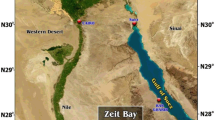Abstract
The 16 July 2008 collapse of a brine well southeast of Artesia, New Mexico, has led to concern about the stability of a brine well facility located in Carlsbad, New Mexico. Characterization, monitoring, and mitigation studies were initiated in 2009, and emergency response procedures are in place should it collapse into a large sinkhole that could threaten nearby structures, two highways and a major irrigation canal. Results of precision survey indicate that differential subsidence is occurring across the facility and is greatest in the vicinity of the brine well. It is anticipated that ground movement-induced fracturing or crushing of competent, shallow caliche horizons could be a precursor to collapse of the material over the brine well cavern into a large sinkhole. A 24-channel seismograph was used to obtain compression wave (p-wave) seismic refraction and refraction microtremor surface wave (s-wave) data at selected locations in the vicinity of the brine well to characterize the condition of the shallow caliche horizons. When intact and unfractured, these caliche horizons are anticipated to be high strength with high seismic p-wave velocities of at least 3,000 m/s. Fracturing or crushing of these materials dramatically reduces the material mass strength and seismic velocities. Shallow seismic profiles totaling about 730 m were completed around the facility. High seismic velocities were interpreted in the caliche adjacent to the highways abutting the facility, while low seismic velocities were interpreted adjacent to a major irrigation canal where measured subsidence was greatest.



Similar content being viewed by others
References
Deere DU, Hendron AJ Jr, Patton FD, Cording EJ (1967) Design of surface and near-surface construction in rock, chap 11. In: Fairhurst C (ed) Failure and breakage of rock: proceedings of the 8th symposium on rock mechanics. American Institute of Mining, Metallurgical, and Petroleum Engineers, New York, pp 237–302
Goodman WM, Schneider JM, Gnage DJ, Henard DA, Van Sambeek LL (2009) Two-dimensional seismic evaluation of the I&W Brine Cavern, Carlsbad, New Mexico: Rapid City, S. Dak., RESPEC, Topical Report RSI-2083, prepared for New Mexico Oil Conservation Division. http://www.emnrd.state.nm.us/ocd/brinewells.htm. Accessed 27 Apr 2010
Henard DA, Van Sambeek LL, Wallace MG, Goodman WM, Hocking CM, Barber CA, Krantz EL (2009) Geohydrological and structural analysis and monitoring I&W Cavern, Carlsbad, New Mexico—status report no. 1: Topical Report RSI-2060, Revision 1, prepared for New Mexico Oil Conservation Division. http://www.emnrd.state.nm.us/ocd/brinewells.htm. Accessed 27 Apr 2010
Karimi-Jafari M, Berest P, Brouard B (2008) Subsidence, sinkholes and craters above salt caverns. Solution Mining Research Institute Spring Meeting, Porto, p 269
Nowatski EA, Alamasmoum AA (1988) A method for estimating the excavatability of caliche. ASTM Geotech Test J 11(2):148–154
O’Brien PNS (1967) The use of amplitudes in seismic refraction survey. In: Musgrave AW (ed) Seismic refraction prospecting. Society of Exploration Geophysicists, Tulsa, pp 85–118
Optim (2004a) SeisOpt@2D™ Version 4.0, Optim LLC, UNR-MS 174, 1664 N. Virginia St., Reno, NV, 89557-0141, USA
Optim (2004b) SeisOpt@ReMi™ Version 3.0, Optim LLC, UNR-MS 174, 1664 N. Virginia St., Reno, NV, 89557-0141, USA
Paine JG, Buckley S, Collins EW, Wilson CR, Kress W (2009) Assessing sinkhole potential at Wink and Daisetta using gravity and radar interferometry. In: Proceedings of the 22nd SAGEEP symposium on the application of geophysics to engineering and environmental problems, Ft. Worth, TX, March 29–April 22, SAGEEP, vol 22. doi:10.4133/1.3176733
Rosenblad BL, Li J (2009) Comparative study of refraction microtremor (ReMi) and active source methods for develo** low-frequency surface wave dispersion curves. JEEG 14(3):101–113
Rucker ML (2006) Integrating seismic refraction and surface wave data collection and interpretation for geotechnical site characterization. In: FHWA Geophysics 2006, St. Louis, MO, December 4–7. http://www.optimsoftware.com/white_papers/images/FHWA2006RuckerP-waveS-wave.pdf
Rucker ML (2008) Estimating in situ geo-material mass density, modulus and unconfined compressive strength from field seismic velocity measurements. In: Highway Geophysics—Nondestructive Evaluation Conference, Charlotte, NC, December 1–4
Rucker ML, Holmquist OC (2006) Surface seismic methods for locating and tracing earth fissures and other significant discontinuities in cemented unsaturated soils and earthen structures. In: Miller GA, Zapata CE, Houston SL, Fredlund DG (eds) Unsaturated soils, Geotechnical Special Publication No. 147, ASCE, Reston, VA, pp 601–612
Rucker ML, Keaton JR (1998) Tracing an earth fissure using refraction-seismic methods with physical verification. In: Borchers JW (ed) Land subsidence, case studies and current research: proceedings of the Joseph F. Poland symposium on land subsidence, Special Publ. No. 8, Association of Engineering Geologists, pp 207–216
Rucker ML, Crumb G, Meyers R, Lommler JC (2005) Geophysical identification of evaporite dissolution structures beneath a highway alignment. In: Beck BF (ed) Sinkholes and the engineering and environmental impacts of Karst, Reston, Virginia, American Society of Civil Engineers, ASCE Geotechnical Special Publication No. 144, pp 659–666
Sherwood JWC (1967) Refraction along an embedded high-speed layer. In: Musgrave AW (ed) Seismic refraction prospecting. Society of Exploration Geophysicists, Tulsa, pp 138–151
Acknowledgments
The work summarized in this paper was performed for the New Mexico Department of Transportation as part of NMDOT Contract No. C05118, Work Assignment TA4, under the direction of Mr. Robert A. Meyers, P.E.
Author information
Authors and Affiliations
Corresponding author
Rights and permissions
About this article
Cite this article
Rucker, M.L., Meyers, R.A. & Lommler, J.C. Assessing shallow rock conditions over a brine cavern using seismic methods. Carbonates Evaporites 27, 199–205 (2012). https://doi.org/10.1007/s13146-012-0108-3
Accepted:
Published:
Issue Date:
DOI: https://doi.org/10.1007/s13146-012-0108-3




